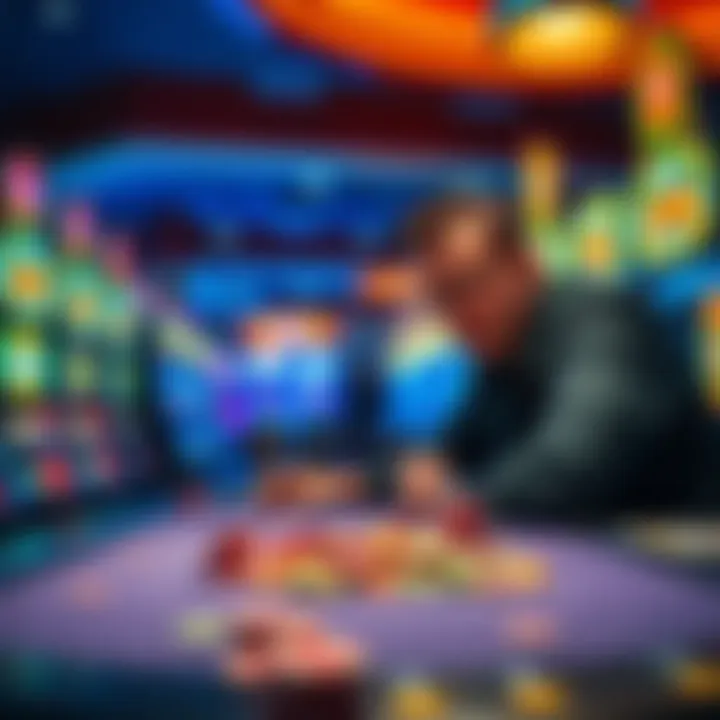Turning Small Bets into Big Loses | A Cautionary Tale from the Casino
Edited By
Sofia Petrova

In a shocking twist of fate, a person turned $600 into $30,000 within an hour at the casino, only to lose it all moments later. This rollercoaster ride of high-stakes gambling underscores the addictive nature of betting and the emotional turmoil that often follows.
The Highs and Lows of Gambling
The gambler expressed feelings of disbelief, stating, "Sometimes I wonder what the actual f*** is wrong with me." Starting with just a $600 deposit, the rapid rise to $30k almost seemed effortless. However, the very thrill of winning turned into an obsession, leading to reckless betting and, ultimately, devastating losses.
The Cycle of Addiction
According to many on user boards, this scenario isn’t unique. One commenter noted, "I’ve done 5k to 54k before. And I also lost it quickly after." This sentiment illustrates a common pattern where initial success drives individuals deeper into gambling, ignoring the risks.
"No amount would ever be enough," one user lamented, further emphasizing the perpetual cycle of addiction that plagues many gamblers.
Community Reflections on Gambling Woes
Comments reveal a shared struggle. Many participants describe similar experiences. One user remarked, "Sounds all too familiar. I’ve done this about twice, put in $500, got it up to $25k, then$0."
Others reinforced this distressing reality, with statements like:
"You should quit gambling entirely before it takes everything from you."
"Most of us have been there— the tilt is bad."
This collective narrative paints a vivid picture of the gambling community, grappling with high wins followed by crushing losses.
Key Insights from the Community
✦ Many players report falling into the trap of chasing losses, hoping to reclaim their funds.
❖ "A rational person would’ve stopped when they turned $600 into $800." This critique resonates with those caught in the cycle, serving as a stark reminder of the need for risk management.
▽ Participants also share methods of self-exclusion, though many admit to failing their own commitments, reflecting the struggle of self-control.
Epilogue
As this gambling story unfolds, it serves as a cautionary tale for many, shining a light on the precarious nature of gambling addiction. Are the highs worth the lows? For many, the answer is far from straightforward. The contrast between excitement and despair is central to the gambling experience—and one that many continue to navigate.
What Lies Ahead for Gamblers?
There’s a strong chance that stories like this will continue to surface as more people explore the gambling world. Experts estimate around 60% of gamblers experience significant swings in fortune—cash in and cash out—before hitting rock bottom. This pattern could lead to stricter regulations in casinos as lawmakers recognize the need for preventive measures. Furthermore, with the rise of online gambling, the likelihood of people falling into these traps is even greater. As families and communities grapple with the fallout, more support systems may emerge to combat gambling addiction and its dire consequences.
Echoes from the Past: A Surprising Connection
In the 1920s, the stock market crash led many investors to chase lost money in the stock market, replicating the gambler's chase of losses at the casino. Just like today’s gamblers, those investors hopped between stocks in a frantic quest for recovery, creating an emotional rollercoaster. This parallel highlights that the thrill of potential gain can cloud judgment, leading individuals to risk everything. Such patterns remind us that financial ventures—whether in gambling or investing—often share the same traps of hope and despair, intertwining human behavior with financial decisions.
